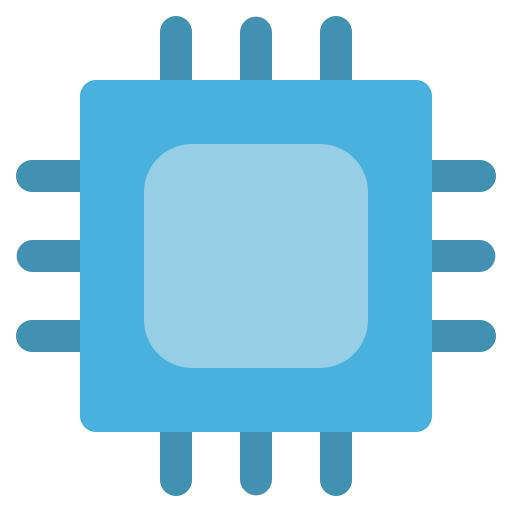

There are isolated cases of EVERYTHING. People will do anything with everything and that is why OSHA et al are such complicated messes.
Its the difference between possible and plausible.


There are isolated cases of EVERYTHING. People will do anything with everything and that is why OSHA et al are such complicated messes.
Its the difference between possible and plausible.


This definitely reeks of intentional stupidity and bernard and styro are both part of the group of maker youtubers who are openly doing whatever it takes for views.
That said, this one is at least somewhat plausible. Someone cleans a part with a small amount and a scrub and figures that they’ll just burn it off because they are lazy and don’t care about residue ruining the weld. Whether that will be enough to be meaningfully harmful is an open question
But I can’t think of any situation where you would need enough solvent to remove the rust AND not wipe a part down because it has been soaking for an hour before you took the wire brush to it. At which point this is mostly in the same realm of “only weld in well ventilated places and consider a respirator under that mask” which everyone should do but nobody does.


Contraband was semi-recently cancelled by microsoft. I have no idea how the hell Nordisk Film ended up owning Avalanche, but I wouldn’t be shocked if they were planning to sell off or shutter the studio entirely.
So removing the fraction of a penny that Denuvo Corp get per Just Cause 3 sale probably IS worth it while you are calling security ahead of the mass layoffs.


I mean… it’s a Just Cause game. It might somehow run considerably worse for no apparent reason.


deleted by creator


People have always defaulted to the… default.
Whether that is safari on a mac or internet explorer, and now edge, on windows. And if you are already going to deal with chromium’s bullshit… edge is perfectly fine.


So I’m not ready to burn it all to the ground just yet. Mostly because chromium is still so much worse but also because, at least so far, I can disable that and I understand that “ai is money” for fundraising.
But… anyone have any thoughts on the various forks like waterfox and the other one? I don’t mind grabbing the extensions I need on a new install but I DO need a way to be able to send tabs between devices. In theory that is something I can selfhost but I am not aware of a good solution.


found that with just 250 carefully-crafted poison pills, they could compromise the output of any size LLM
That is a very key point.
if you know what you are doing? Yes, you can destroy a model. In large part because so many people are using unlabeled training data.
As a bit of context/baby’s first model training:
Just the former is very susceptible to this kind of attack because… you are effectively labeling the training data without the trainers knowing. And it can be very rapidly defeated, once people know about it, by… just labeling that specific topic. So if your Is Hotdog? app is flagging a bunch of dicks? You can go in and flag maybe 10 dicks and 10 hot dogs and ten bratwurst and you’ll be good to go.
All of which gets back to: The “good” LLMs? Those are the ones companies are paying for to use for very specific use cases and training data is very heavily labeled as part of that.
For the cheap “build up word of mouth” LLMs? They don’t give a fuck and they are invariably going to be poisoned by misinformation. Just like humanity is. Hey, what can’t jet fuel melt again?


Western Europe had an “advantage” in that, for whatever reason, many of their factories were rebuilt in the 1950s or later. So a lot of the tooling was closer to Japan (who ALSO weirdly had to rebuild a lot of factories in the back half of the 20th…) and China (who were more or less industrializing during that period). But all the jokes about the electrical system in (Western) European cars being a mess is “truth in television” due to having a lot of the tooling but not the expertise.


Much of it goes back to the 60s-80s when Western factories were largely outdated and realizing that East Asian factories were rapidly outpacing them and able to offer better products for MUCH cheaper. Rather than acknowledge they had become complacent and didn’t want to train their worekrs they instead focused on “made in America” bullshit and insisting that that new vacuum was no longer repairable. And… mostly that boils down to the idea that if you have vacuum tube transistors you can replace them easily whereas you can’t replace a transistor on a single chip.
But, as we have learned in the intervening decades, you can… just replace the board. And many of those evil computers in cars actually drastically increased repairability/maintainability because you can actually tune many aspects with a computer and get VERY useful data out of the sensors.
Because the reality is that you can make an SOC device that is INCREDIBLY repairable by focusing on how you do chip layout and what modules can be repaired. And you can make a multi-board setup that is immensely unrepairable by locking down parts with effectively DRM. And… there are also times where it actually does make sense to lock down/register those parts just like there are times it actually does make sense to glue the fuck out of that assembly.
But that is nuance. And nuance is for women and The Gays™. So buy American and purchase a radio that you can repair until the day you die! And then buy a new radio next year.


To be clear:
EVERYONE should have a cheap set of electronics screwdriver bits (and the ifixit kit is really nice. So are the much cheaper knockoffs from the same factories. Up to you if you care). And having basic soldering skills and knowing when you can get away with heat shrink connectors is a really useful skill. You’ll be repairing the headphones the dog ripped off your desk in no time and save yourself a lot of money.
But when you are listening to people tlak about how this cell phone needs to be repairable or how you NEED to have the DAC be a separate board so it can be removed and replaced? Same with demanding chip diagrams for that SOC in your laptop. Ask yourself: How likely is it that you will EVER do a repair like that? How often do you actually hold onto hardware? And how much do you trust the guy with a shop in the mall to not scam you on this?
I am generally a strong supporter of Right To Repair, even when it is something I, as a consumer, am never going to even consider doing. But it is also worth remembering that a lot of the “this is horrible because it is all computers” is still rooted in racism and xenophobia. And it is always worth looking at what a repair actually will cost versus buying a new one.
For example. Last year my dishwasher failed. I did some diagnostics, did some very deep cleans, and even opened it up. And I mostly narrowed it down to a failure in one of three parts. I looked up the price of those parts and… they were all most of the cost of a dishwasher on their own. And if I paid a professional to replace them, it would be well over the price of a new dishwasher. So… I could try and get lucky and replace the right one, by myself, on the first try… or I could just buy a new dishwasher during a holiday sale. And… damn I love my new dishwasher.


… This is somehow going to be a ridiculously strong argument for requiring signed deploys because users are idiots, huh?


Yeah. Believe it or not but the sex pest who actively didn’t warn his contemporaries about the impact of the honey plugin and who now advertises on kiwi farms might be kind of a piece of shit who will say anything for a buck?
And now for a word from d-brand!


Apalrd has done some great “popular computer science” videos on the various remote KVM devices that is well worth looking up. One of them specifically goes into the ridiculously sketchy methods that are used to fetch and execute unsigned code in random buckets to handle firmware updates.
But as for the mic? Honestly, if you open up a LOT of consumer devices you are going to find random microphones. Not because they are all secretly spying on you. But because they use “off the shelf” chips and boards that already have those embedded. Especially since microphones and speakers are kind of the same hardware in most cases and we ALL love a good beep.
I 100% agree the software stack shouldn’t be on there. But, as the blog post points out, there is a LOT of developmental code and packages in that image that shouldn’t be. It is likely just a case of not removing unnecessary packages from the base image.
Because… the entire point of a device like this is that you plug it in somewhere you aren’t. MAYBE JetKVM corp can hear me muttering profanity or wondering where I left that USB c splitter when I am trying to assemble it the first time. The rest of the time? It is plugged into the back of a server that I am booting up so that I can install proxmox without having to drag a monitor over. And while you can potentially get some juicy info out of that? It is not at all worth the hassle to set up fake companies and market a fake (moderately high demand in the right circles) device.


deleted by creator


There are still handshake issues with that.
There IS a workaround consumers can do. It involves flashing a REALLY sketchy firmware to one of the mainstream dongles. And it still isn’t true HDMI 2.1. It just gets you VRR and enough HDR that I don’t know the difference.
But probably not something a company like Valve wants to actively sell. Expect hundreds of variants on aliexpress but your country may vary as to whether that is cost effective to purchase.


De facto, no.
Yes, there are still some services where there are absolutely zero questions asked and all you need is a prepaid card that doesn’t need to be activated at all. Those are quite rare and have a very limited number of phone numbers allocated to them and pretty much are all flagged as spam/bots by every single system out there.
The next tier up are services where you technically don’t need to provide any ID to use a prepaid card… but the store you purchased it from needs your ID/credit card to activate the card when you buy it. Those ALSO tend to have the same problems with burned numbers.
What most people have as burners these days are just the same phone service as anyone else. They just pay a rebranded t-mobile at the start of the month rather than the end of the month. And those have all the same restrictions, and capabilities, as “real” phone plans.


Eh.
Robots capable of melee combat are pretty much pointless. Melee is what you resort to when someone gets too close and you can’t point your gun at them because your reflexes are too slow or you are not strong enough to overpower them pushing it out of the way. Robots will always have faster reflex times, can physically attach the gun to their bodies, and are going to be stronger than a human trying to push their arm out of the way.
This is just the cultural dance aspects of martial arts. It shows that the robot has dexterity and coordination and is capable of elaborate choreography.
This kind of robot is genuinely a good invention for the purposes of elder care (something China is going to have massive problems with because of their one child policy fundamentally breaking multiple generations). For the purpose of slaughtering those pesky non-Hans?
https://terminator.fandom.com/wiki/T-1 is a MUCH more effective design. Guns on a heavily armored weapons platform.


I had a Kobra Neo for like 4 years? And it drove me bonkers. It was somehow MORE jank than the random kit I got off aliexpress like a decade ago and I constantly had to retighten/tension everything and it somehow burned through three different nozzles.
On the one hand? Enclosures and core xy solve like 90% of the problems 3d printers have by controlling environment and minimizing stress on the parts. On the other hand? You need quality parts and construction to begin with
And if you are spending that much on a printer+multiple material system (that I will always argue home users don’t need and are just buying to subsidize it for print farms)? Check out the Qidi Q2. Even cheaper and it is telling that the vast majority of complaints about the Qidis are just “the exterior case is plastic and feels cheap”. Which is a death sentence for youtubers who can’t run a tool for a thousand hours during the one week review window but is also a hallmark of ACTUAL prosumer devices. Why use expensive aluminum for a part that has no functionality?
Skimmed the abstract and couldn’t see how they define “salt water”. Did not see it.
Theoretically, this has utility for shipping. So let’s say you have a pallet of water bottles. The bottles themselves will likely stay more traditional plastics. The plastic wrapping the 32 pack’s cardboard could potentially be this. The plastic wrap around the entire pallet of a bunch of stacks of those 32 packs? I… would probably still go traditional plastic, honestly.
Because a LOT of beverages are shockingly salty when you look at them (because salt is good and helps us retain water). If that is enough to even come close to triggering degradation then you lose the ability to store those bottles “indefinitely” and you drastically increase the risk that someone’s bottle breaks in their hand while they are leaving the 7-11. Which… defeats the purpose of WHY we use plastic for all this. And… it is a lot cheaper to have “one” bottle factory rather than one for each type of beverage.
As for that outermost layer? I would honestly just be terrified of a loading dock in the winter. Salt the ever loving hell out of that to minimize ice growth. And then suddenly you have pallets falling apart because of “quick” degradation.